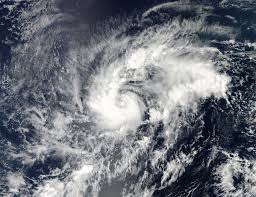Types of Variable > Endogenous Variable and Exogenous Variable
What are Endogenous Variables?
Endogenous variables are used in econometrics and sometimes in linear regression. They are similar to (but not exactly the same as) dependent variables. Endogenous variables have values that are determined by other variables in the system (these “other” variables are called exogenous variables). According to Daniel Little, University of Michigan-Dearborn, an endogenous variable is defined in the following way:
A variable xj is said to be endogenous within the causal model M if its value is determined or influenced by one or more of the independent variables X (excluding itself).
Endogenous Variable Example

Let’s suppose a manufacturing plant produces a certain amount of white sugar. The amount of product (white sugar) is the endogenous variable and is dependent on any number of other variables which may include weather, pests, price of fuel etc. As the amount of sugar is entirely dependent on the other factors in the system, it’s said to be purely endogenous. However, in real life purely endogenous variables are a rarity; it’s more likely that endogenous variables are only partially determined by exogenous factors. For example, sugar production is affected by pests, and pests are affected by weather. Therefore, pests in this particular system are partially endogenous and partially exogenous.
Classifying Variables within a System
Unlike independent variables and dependent variables in an experiment, identifying which variables are exogenous, and which are endogenous variables, can pose a challenge. Using the sugar production example again, something might cause the amount of sugar produced to rise. For example, a new conveyor belt might result in an increase in sugar output. In order to decide if this new variable is exogenous, you would have to decide if the increase in output would cause the new variables to change. A variable like “weather” is definitely exogenous as a rise in output would have no effect on the weather. But what about “Price”? The price of sugar certainly isn’t affected by one small manufacturing plant’s output, but what if this was a major manufacturing plant that suddenly increased its production and saturated the market? Price in this case would be partially an endogenous variable and partially an exogenous one.
In Simultaneous Equations
An endogenous variable is one that is explained by a model. So if you have a set of simultaneous equations, those equations (the simultaneous equation model) should explain the behavior of any endogenous variable. On the other hand, if the model doesn’t explain the behavior of certain variable, then those variables are exogenous. The following example (from this Yale University post) explains the difference with an example. Equations 1, 2, and 3 are a simple multiplier model with several variables:
- A composition function: Ct = a1 + a2Yt + et
- An investment function: It = b1 + b2rt + ut
- Income identity function: Yt = Ct + It + Gt
Where “t” is time and the variables are:
- Consumption (Ct)
- Investment (It)
- Total income/GDP (Yt)
- Government Spending (Gt)
- Interest Rate (Rt)
Ct, It, and Yt are endogenous as they are explained by the model. rt and Gt are exogenous as they are not explained.
Exogenous Variables
 An exogenous variable is a variable that is not affected by other variables in the system. For example, take a simple causal system like farming. Variables like weather, farmer skill, pests, and availability of seed are all exogenous to crop production. Exogenous comes from the Greek Exo, meaning “outside” and gignomai, meaning “to produce.” In contrast, an endogenous variable is one that is influenced by other factors in the system. In this example, flower growth is affected by sunlight and is therefore endogenous.
An exogenous variable is a variable that is not affected by other variables in the system. For example, take a simple causal system like farming. Variables like weather, farmer skill, pests, and availability of seed are all exogenous to crop production. Exogenous comes from the Greek Exo, meaning “outside” and gignomai, meaning “to produce.” In contrast, an endogenous variable is one that is influenced by other factors in the system. In this example, flower growth is affected by sunlight and is therefore endogenous.
Exogenous variables…
- are fixed when they enter the model.
- are taken as a “given” in the model.
- influence endogenous variables in the model.
- are not determined by the model.
- are not explained by the model.
The term “Exogenous variable” is almost exclusively used in econometrics. However, it is sometimes used in linear regression to describe the independent variable x in the model. In other words, an exogenous variable is one that isn’t affected by any other variables in the model (although it could be affected by factors outside of the linear regression model being studied).
Exogenous Variables in Experiments
If your data comes from a double blind, controlled experiment, the independent variables are exogenous. In this type of study, the only thing that affects the independent variables is you, the researcher–and you are outside the system. In other studies, the independent variables may be exogenous, or they may be endogenous. If they are endogenous, it means that some other variables within the system (perhaps another independent variable, or a confounding variable) are affecting the results. This can have negative consequences on your results, which is why it’s important to have controlled experiments whenever possible.
Related article: Production Functions (CalculusHowTo.com)
References
Gonick, L. (1993). The Cartoon Guide to Statistics. HarperPerennial.
Kotz, S.; et al., eds. (2006), Encyclopedia of Statistical Sciences, Wiley.
Lindstrom, D. (2010). Schaum’s Easy Outline of Statistics, Second Edition (Schaum’s Easy Outlines) 2nd Edition. McGraw-Hill Education
Vogt, W.P. (2005). Dictionary of Statistics & Methodology: A Nontechnical Guide for the Social Sciences. SAGE.